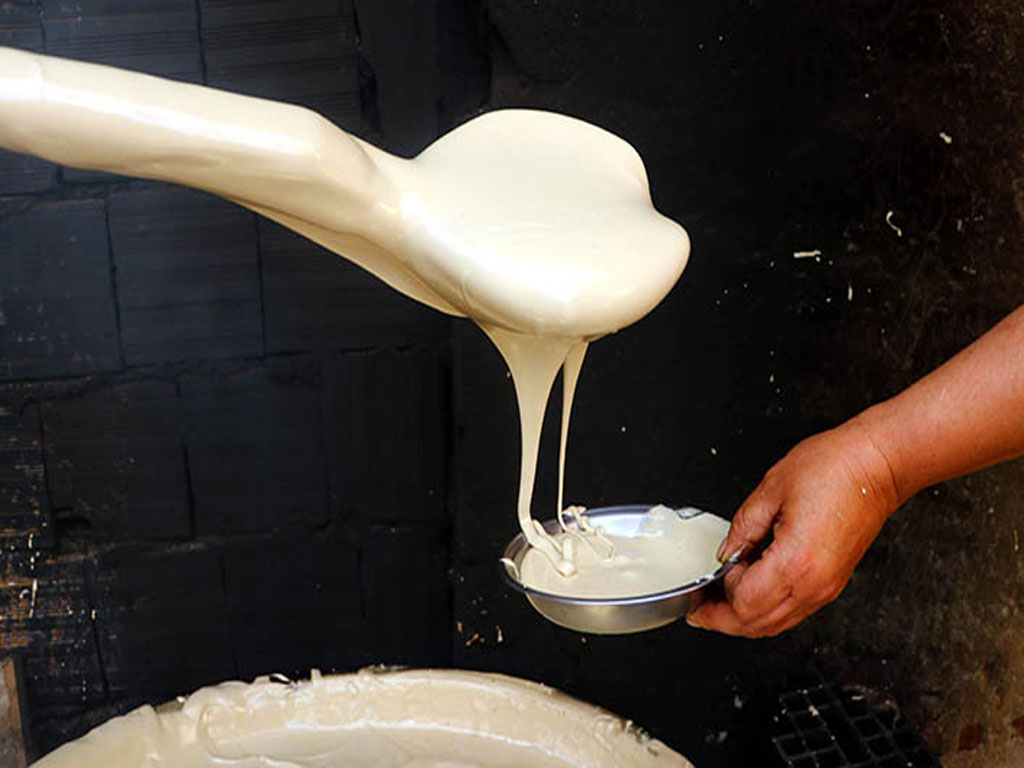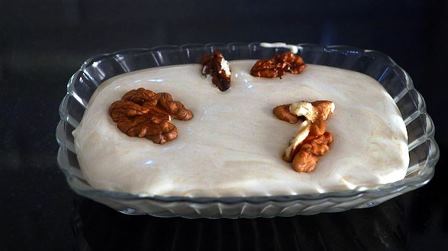Bulama is a traditional solid molasses variety unique to Tekirdağ and the Thrace region. It is obtained by boiling grape juice, çöven (soapwort) water, and sugar in specific proportions and is consumed as a breakfast dessert. Historically, it has been produced not only in Thrace but also in Balıkesir, Bursa, Ankara (Güdül, Nallıhan), and Gaziantep. However, today, its production is largely limited to Tekirdağ. The use of soapwort in the production process helps bulama achieve its thick consistency and light color, contributing to the preservation of traditional methods.

Bulama Production Process
Raw Material Preparation
The main ingredients required for bulama production are:
- Grape juice (şıra)
- Soapwort water
- Granulated sugar
- Clarifying soil
- Walnut pieces (optional)
The production process begins with the harvesting of grapes, which are then traditionally pressed to extract their juice. The obtained grape juice (şıra) is left to settle, allowing impurities to sink. After a certain resting period, the clarified juice is transferred to large cauldrons and heated over a wood fire.
Preparation of Soapwort Water
Soapwort, due to its saponin content, acts as both a thickening agent and a whitening agent. The roots of the soapwort plant are boiled, and the extracted essence is filtered multiple times to eliminate its natural bitterness. The final soapwort water is then added to the grape juice to help bulama achieve the desired consistency.
Boiling and Thickening Process
- The prepared grape juice is mixed with specific amounts of sugar and soapwort water.
- The mixture is boiled in large copper cauldrons until it reaches a dense consistency.
- During boiling, the mixture is constantly stirred using large wooden spoons.
- The foam extracted from soapwort water is gradually added to the mixture at regular intervals.
- Once the color changes and the texture thickens, the mixture is removed from the heat and left to rest.
After boiling is complete, bulama is transferred into containers and sprinkled with walnut pieces before being stored. Traditionally, it is kept in jars, tin cans, or glass containers for preservation.
Geographical Indication Registration and Its Importance
For many years, bulama has been produced using traditional methods in Tekirdağ. In 2019, the Thrace Development Agency and Süleymanpaşa Municipality applied for a geographical indication for bulama. As a result, Tekirdağ Bulama was officially registered as a geographically protected product.

Geographical indication registration is essential for:
- Preserving the authenticity of the product,
- Maintaining traditional production techniques,
- Enhancing economic value, and
- Supporting local producers.
Additionally, this registration increases the product’s recognition in both national and international markets, helping it gain greater commercial significance.

